一、动画系统基本概念

1、动画的基本概念

(1)帧

(2) 帧动画
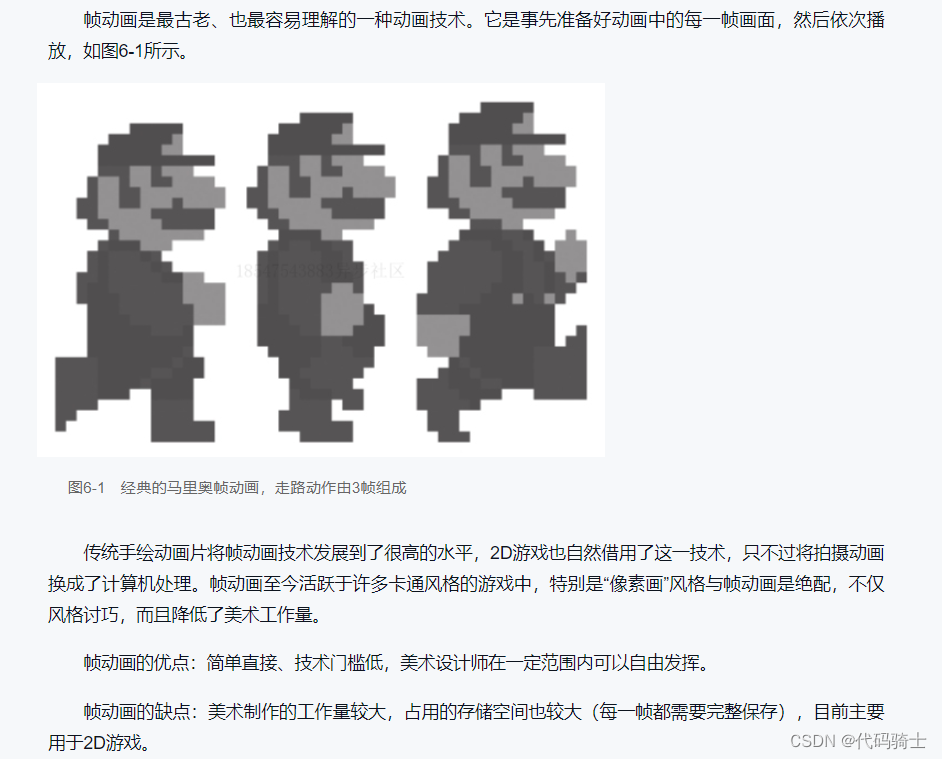
(3)3D骨骼动画




扫描二维码关注公众号,回复:
14329903 查看本文章


(4)2D骨骼动画

2、动画融合
3、动画状态机

(1)理解动画状态机
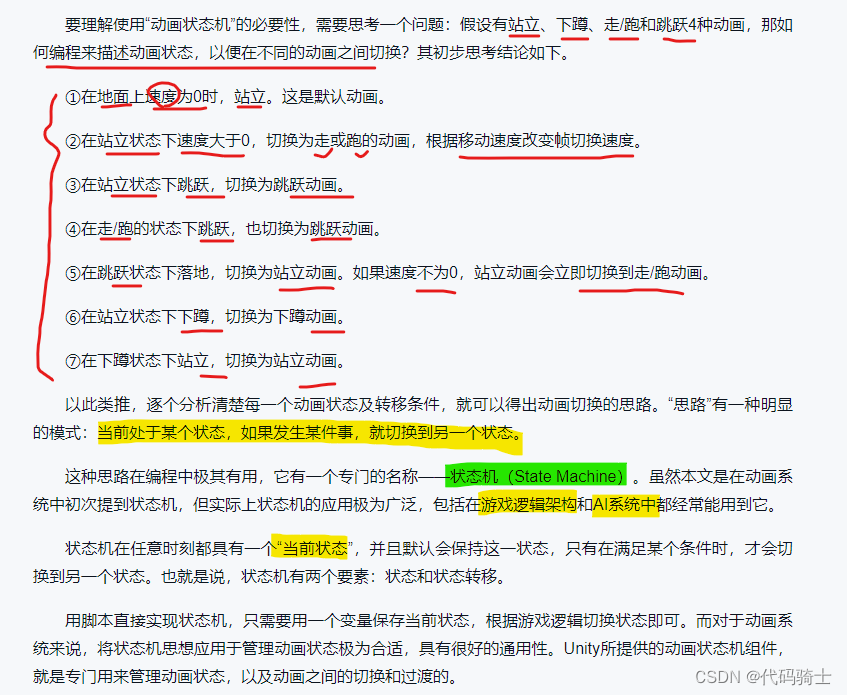
(2)动画状态机设计举例



4、根骨骼动画

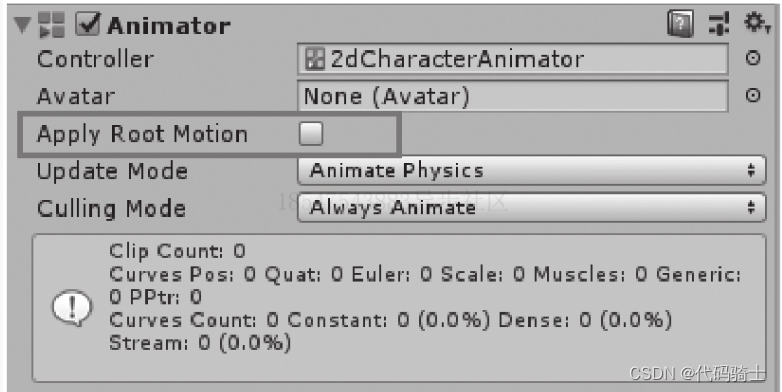

二、2D动画实例分析

1、准备工作
(1)下载资源


(2)整理资源
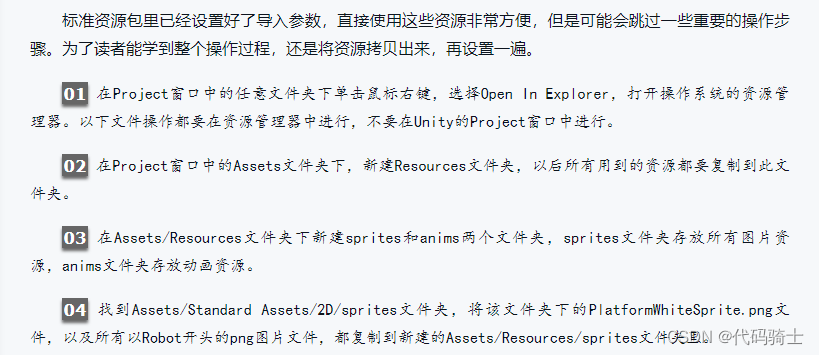

(3)图片设置
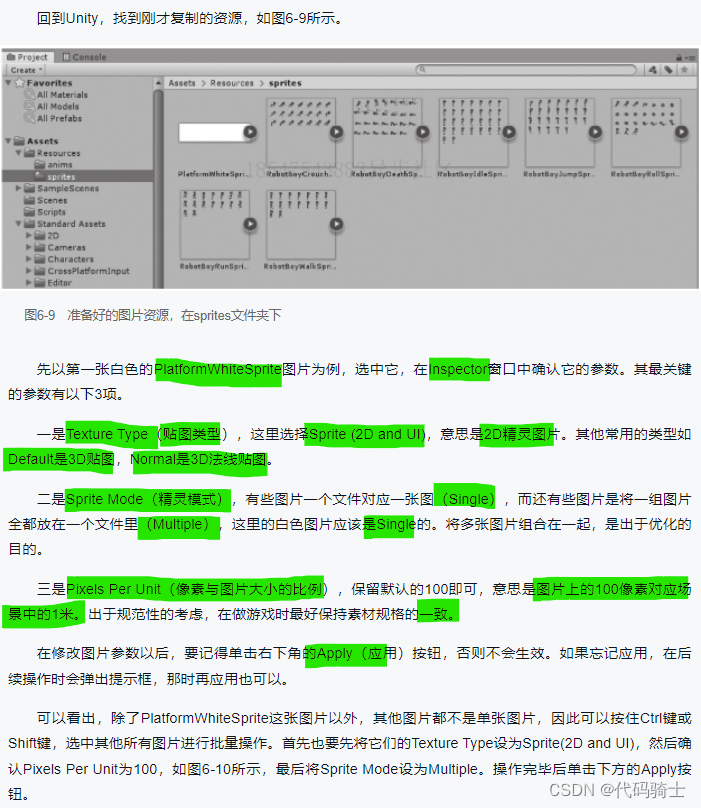



2、角色与控制的制作步骤
(1)下载资源
需要修改以下代码才能进行演示:
SimpleActivatorMenu.cs
using System;
using UnityEngine;
#pragma warning disable 618
namespace UnityStandardAssets.Utility
{
public class SimpleActivatorMenu : MonoBehaviour
{
// An incredibly simple menu which, when given references
// to gameobjects in the scene
//public GUIText camSwitchButton;
public GameObject[] objects;
private int m_CurrentActiveObject;
private void OnEnable()
{
// active object starts from first in array
m_CurrentActiveObject = 0;
// camSwitchButton.text = objects[m_CurrentActiveObject].name;
}
public void NextCamera()
{
int nextactiveobject = m_CurrentActiveObject + 1 >= objects.Length ? 0 : m_CurrentActiveObject + 1;
for (int i = 0; i < objects.Length; i++)
{
objects[i].SetActive(i == nextactiveobject);
}
m_CurrentActiveObject = nextactiveobject;
// camSwitchButton.text = objects[m_CurrentActiveObject].name;
}
}
}
PlatformerCharacter2D.cs
using System;
using UnityEngine;
#pragma warning disable 649
namespace UnityStandardAssets._2D
{
public class PlatformerCharacter2D : MonoBehaviour
{
[SerializeField] private float m_MaxSpeed = 10f; // The fastest the player can travel in the x axis.
[SerializeField] private float m_JumpForce = 400f; // Amount of force added when the player jumps.
[Range(0, 1)] [SerializeField] private float m_CrouchSpeed = .36f; // Amount of maxSpeed applied to crouching movement. 1 = 100%
[SerializeField] private bool m_AirControl = false; // Whether or not a player can steer while jumping;
[SerializeField] private LayerMask m_WhatIsGround; // A mask determining what is ground to the character
private Transform m_GroundCheck; // A position marking where to check if the player is grounded.
const float k_GroundedRadius = .2f; // Radius of the overlap circle to determine if grounded
private bool m_Grounded; // Whether or not the player is grounded.
private Transform m_CeilingCheck; // A position marking where to check for ceilings
const float k_CeilingRadius = .01f; // Radius of the overlap circle to determine if the player can stand up
private Animator m_Anim; // Reference to the player's animator component.
private Rigidbody2D m_Rigidbody2D;
private bool m_FacingRight = true; // For determining which way the player is currently facing.
public bool m_JumpReset = false;
private void Awake()
{
// Setting up references.
m_GroundCheck = transform.Find("GroundCheck");
m_CeilingCheck = transform.Find("CeilingCheck");
m_Anim = GetComponent<Animator>();
m_Rigidbody2D = GetComponent<Rigidbody2D>();
}
private void FixedUpdate()
{
m_Grounded = false;
// The player is grounded if a circlecast to the groundcheck position hits anything designated as ground
// This can be done using layers instead but Sample Assets will not overwrite your project settings.
Collider2D[] colliders = Physics2D.OverlapCircleAll(m_GroundCheck.position, k_GroundedRadius, m_WhatIsGround);
for (int i = 0; i < colliders.Length; i++)
{
if (colliders[i].gameObject != gameObject)
{
if (colliders[i].gameObject.tag == "JumpPoint")
{
m_JumpReset = true;
Destroy(colliders[i].gameObject);
}
else
{
m_Grounded = true;
}
}
}
m_Anim.SetBool("Ground", m_Grounded);
// Set the vertical animation
m_Anim.SetFloat("vSpeed", m_Rigidbody2D.velocity.y);
}
public void Move(float move, bool crouch, bool jump)
{
// If crouching, check to see if the character can stand up
if (!crouch && m_Anim.GetBool("Crouch"))
{
// If the character has a ceiling preventing them from standing up, keep them crouching
if (Physics2D.OverlapCircle(m_CeilingCheck.position, k_CeilingRadius, m_WhatIsGround))
{
crouch = true;
}
}
// Set whether or not the character is crouching in the animator
m_Anim.SetBool("Crouch", crouch);
//only control the player if grounded or airControl is turned on
if (m_Grounded || m_AirControl)
{
// Reduce the speed if crouching by the crouchSpeed multiplier
move = (crouch ? move * m_CrouchSpeed : move);
// The Speed animator parameter is set to the absolute value of the horizontal input.
m_Anim.SetFloat("Speed", Mathf.Abs(move));
// Move the character
m_Rigidbody2D.velocity = new Vector2(move * m_MaxSpeed, m_Rigidbody2D.velocity.y);
// If the input is moving the player right and the player is facing left...
if (move > 0 && !m_FacingRight)
{
// ... flip the player.
Flip();
}
// Otherwise if the input is moving the player left and the player is facing right...
else if (move < 0 && m_FacingRight)
{
// ... flip the player.
Flip();
}
}
// If the player should jump...
if ((m_Grounded || m_JumpReset) && jump)
{
// Add a vertical force to the player.
m_Grounded = false;
m_JumpReset = false;
m_Anim.SetBool("Ground", false);
Vector2 resetVlocity = m_Rigidbody2D.velocity;
resetVlocity.y = Mathf.Max(0, resetVlocity.y);
m_Rigidbody2D.velocity = resetVlocity;
m_Rigidbody2D.AddForce(new Vector2(0f, m_JumpForce));
}
}
private void Flip()
{
// Switch the way the player is labelled as facing.
m_FacingRight = !m_FacingRight;
// Multiply the player's x local scale by -1.
Vector3 theScale = transform.localScale;
theScale.x *= -1;
transform.localScale = theScale;
}
}
}演示:

(2)整理资源



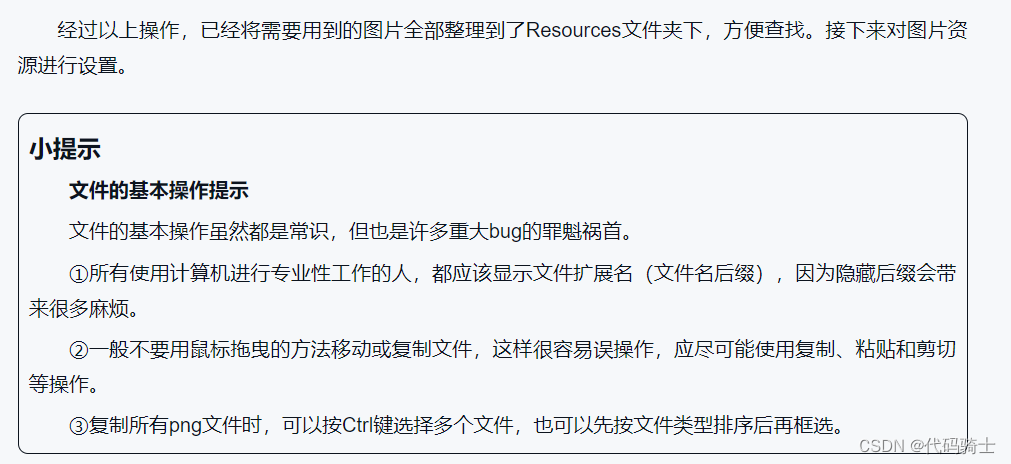
(3)图片设置
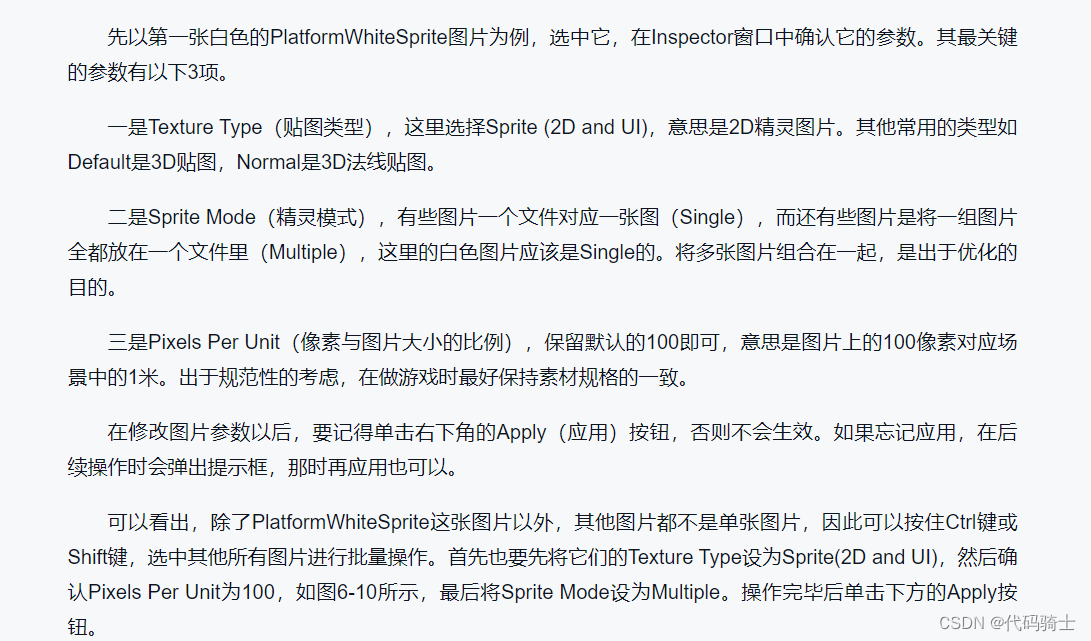


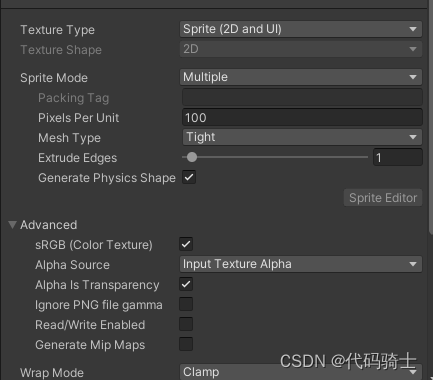



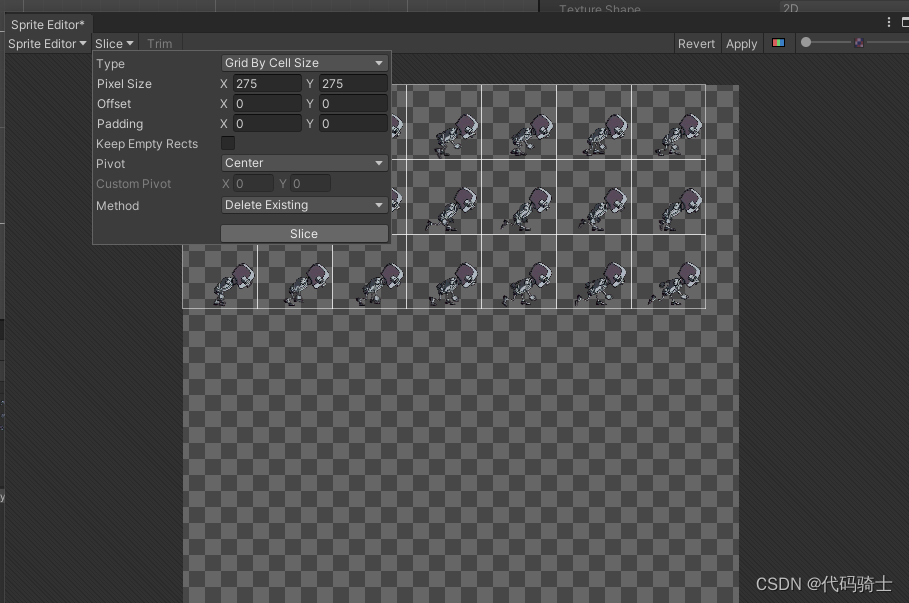


3、动画的制作步骤




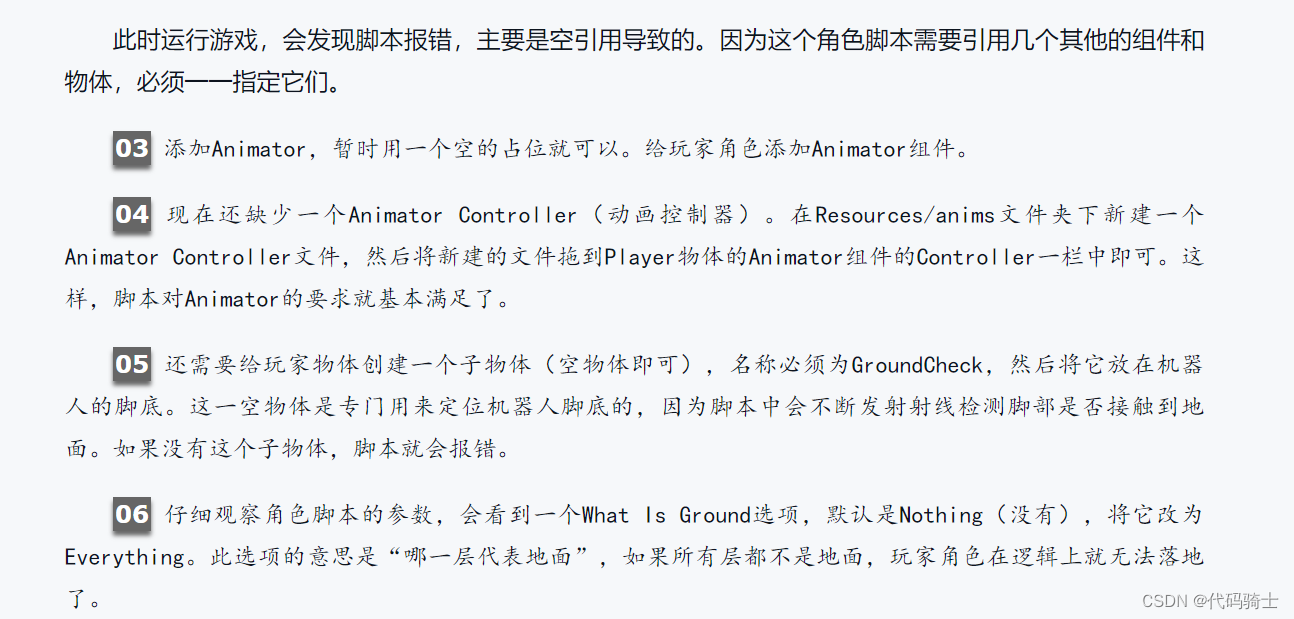


4、创建动画变量

(1)编辑动画



注:新版本的unity没有sample可以通过拖动图片手动改变帧率。


(2)编辑动画状态机




(3)创建动画变量




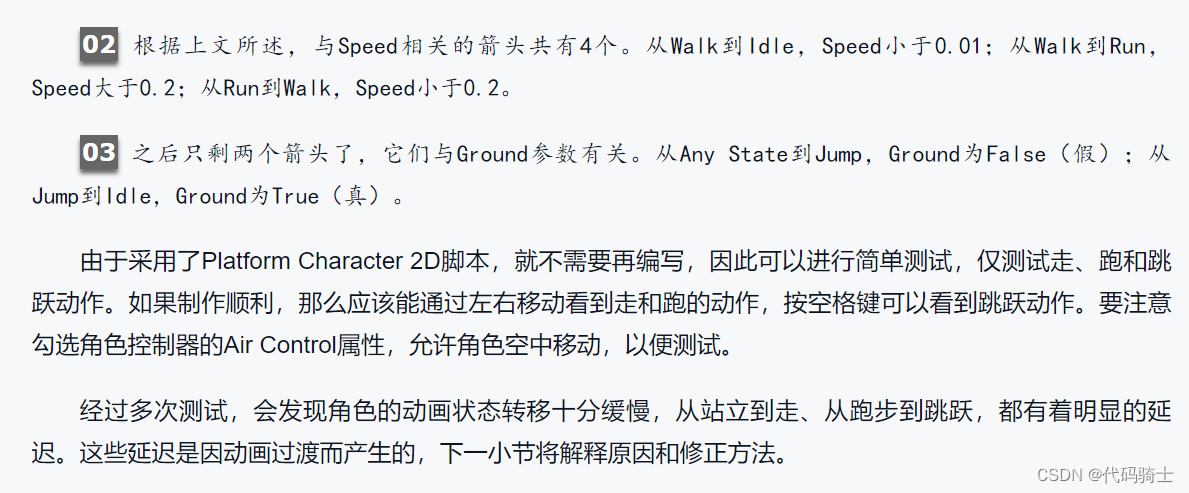

 5、设置动画过渡
5、设置动画过渡

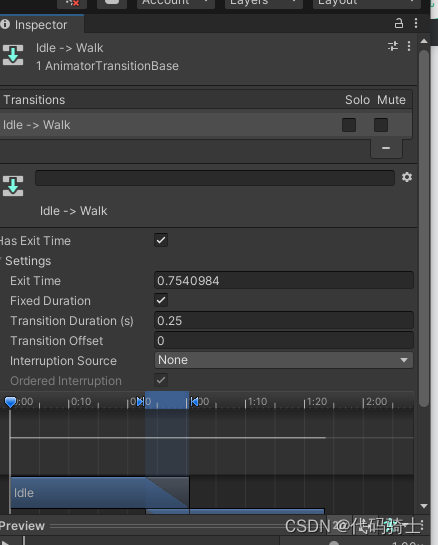



6、用脚本修改动画变量


7、脚本编程重点提示

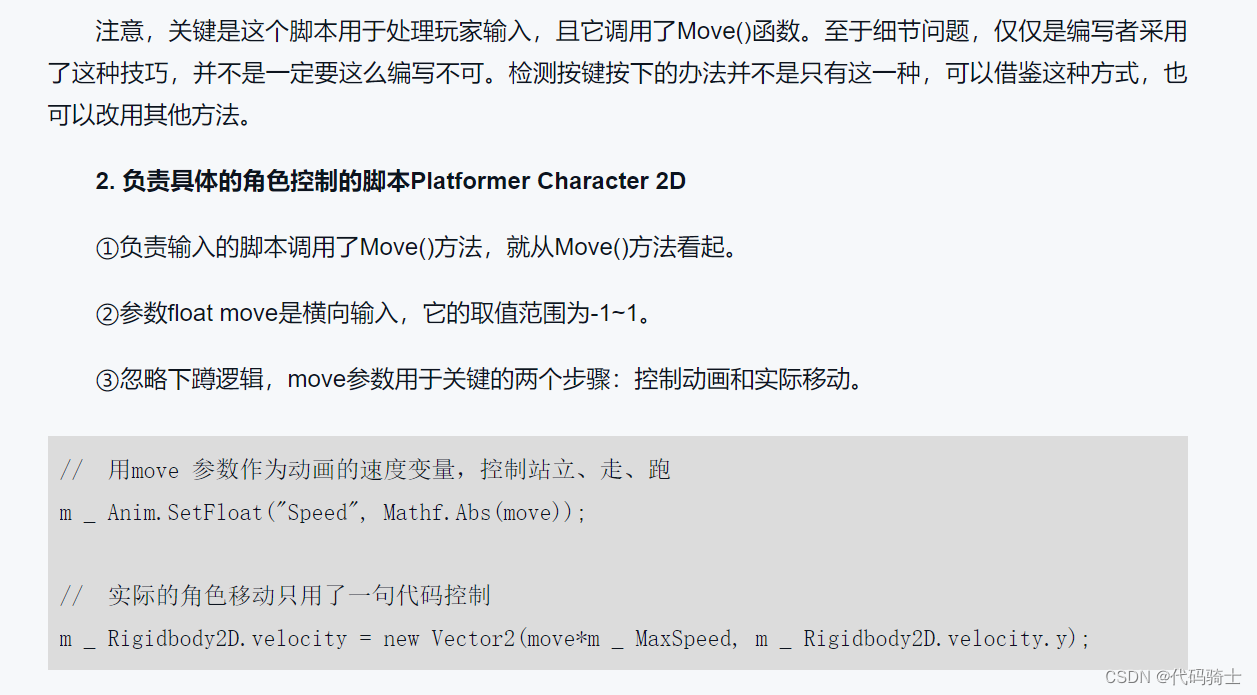


8、总结和拓展

三、三维模型与动画的导入
1、导入示例

2、三维模型资源设置
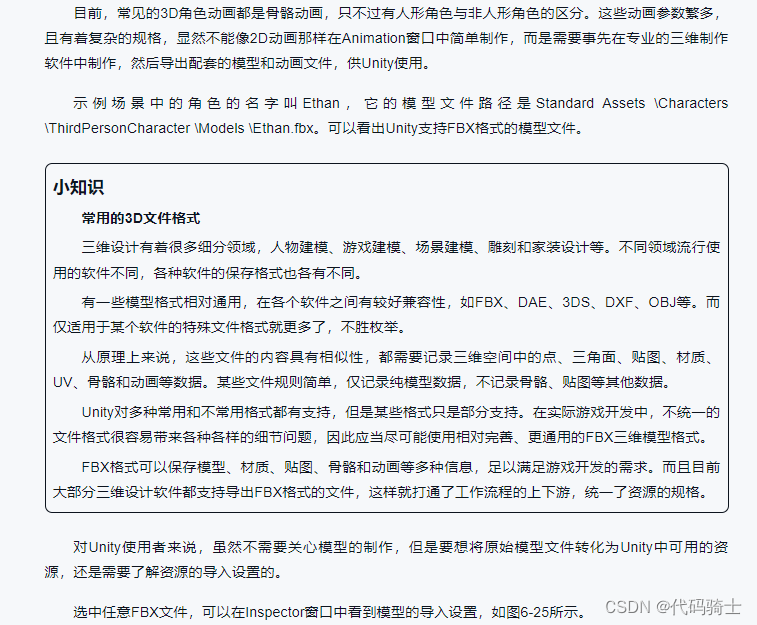


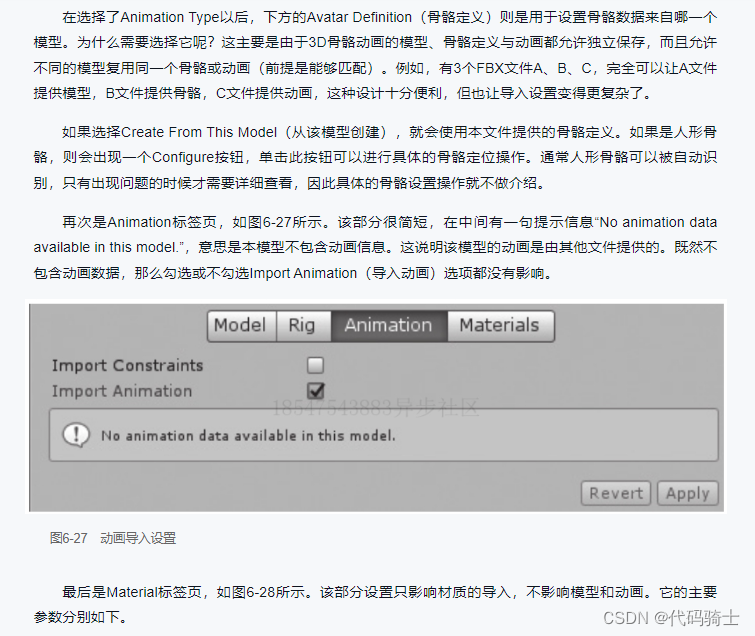

3、三维动画资源设置

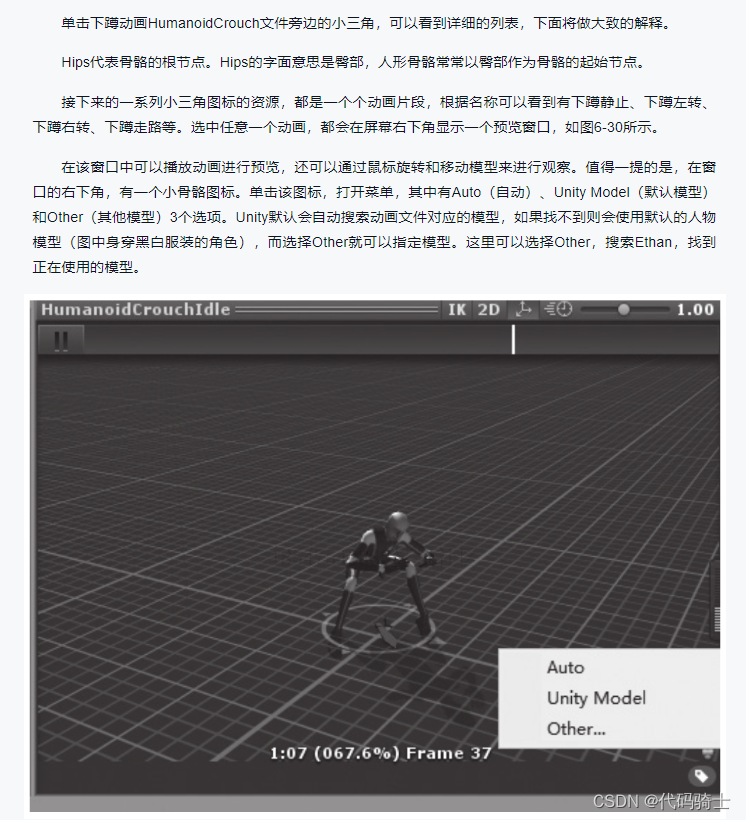
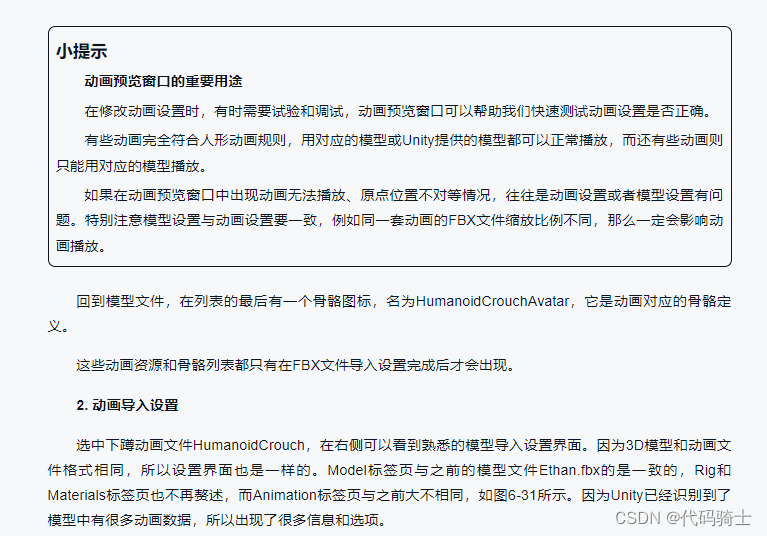

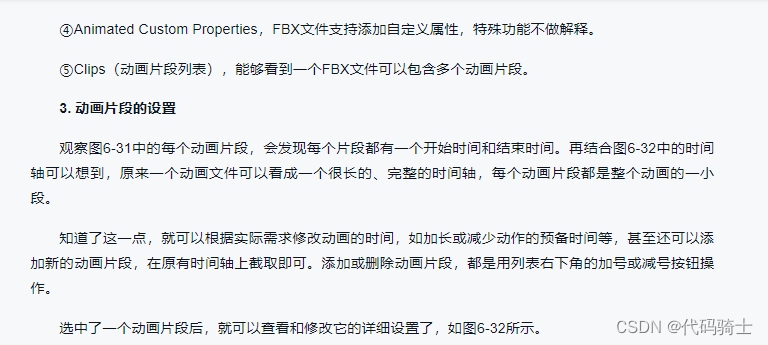


4、模型骨骼与动画骨骼的关系

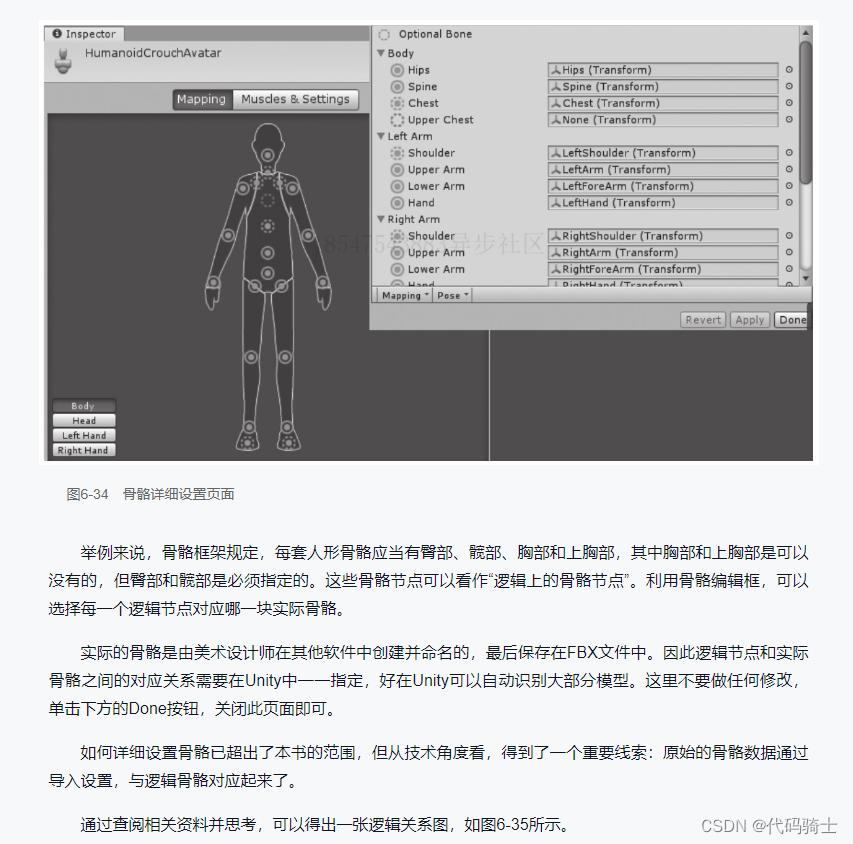

四、动画进阶技术实例分析

1、动画融合树
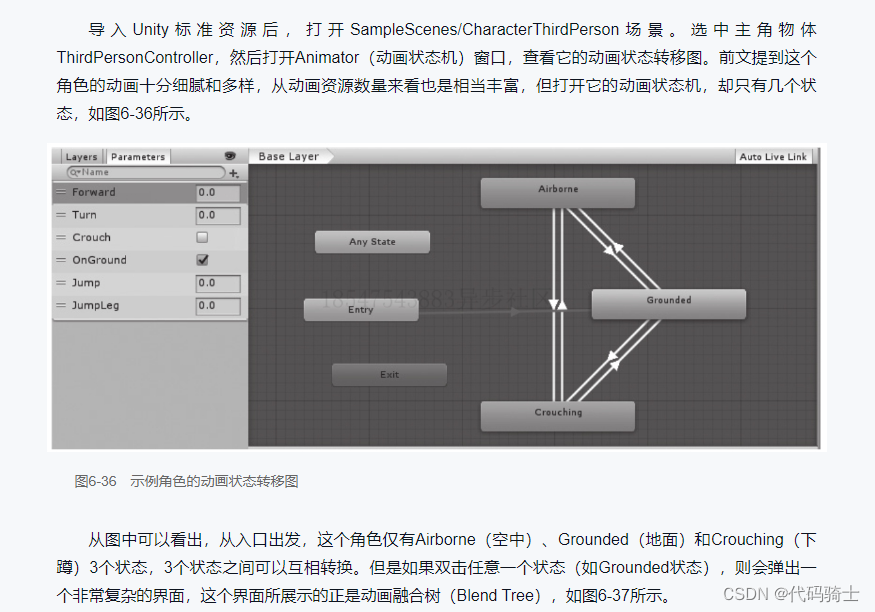




2、第三人称角色控制的脚本分析



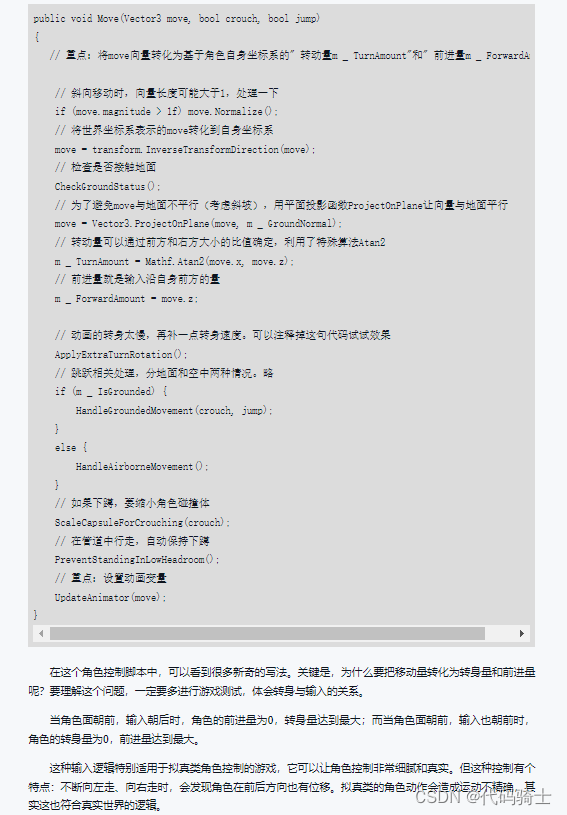

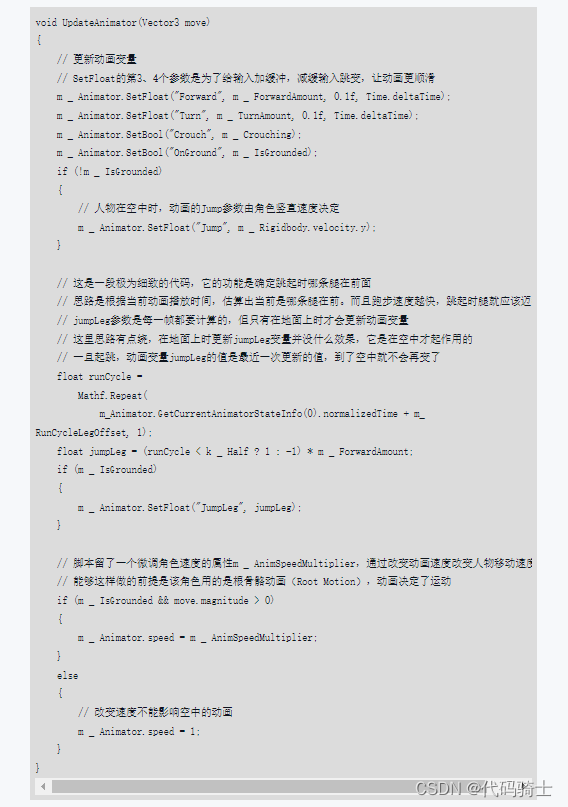

3、根骨骼动画的运用
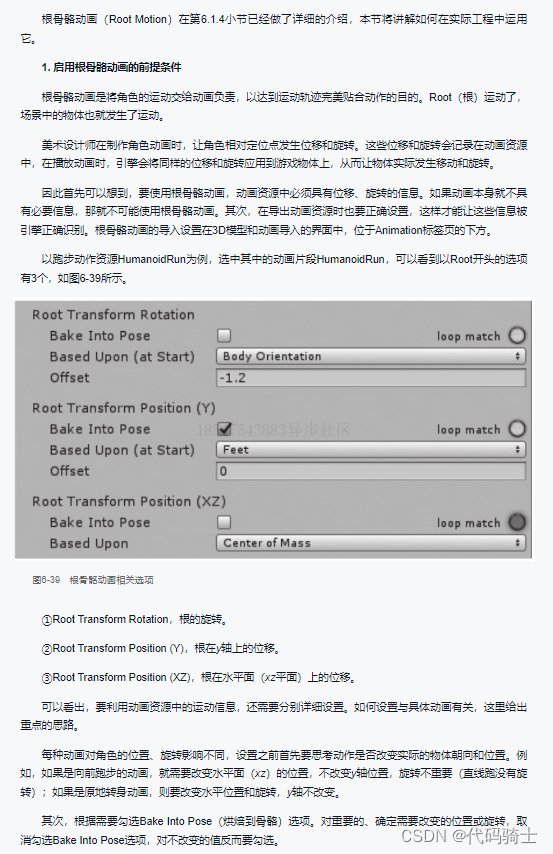

4、动画遮罩


5、动画层
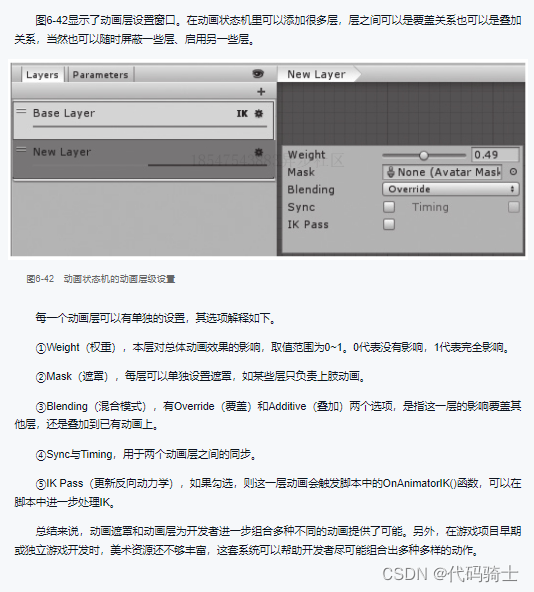
6、动画帧事件
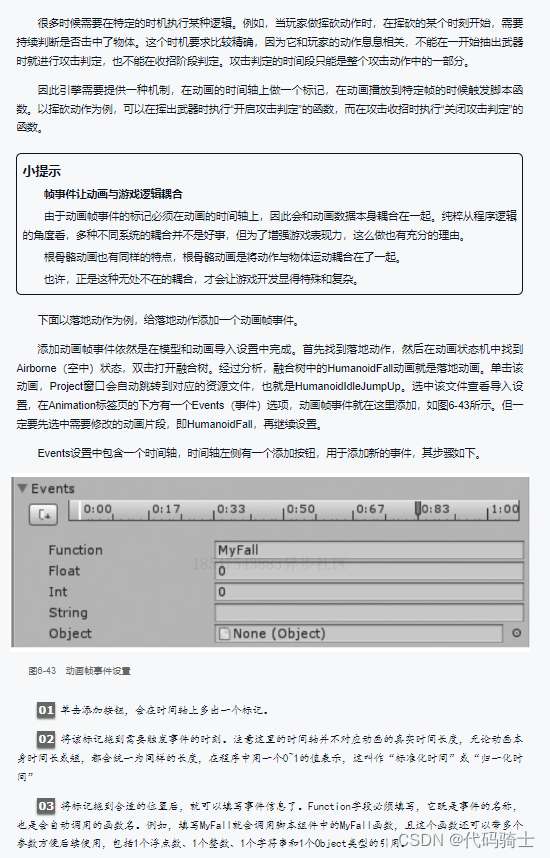

7、反向动力学(IK)



